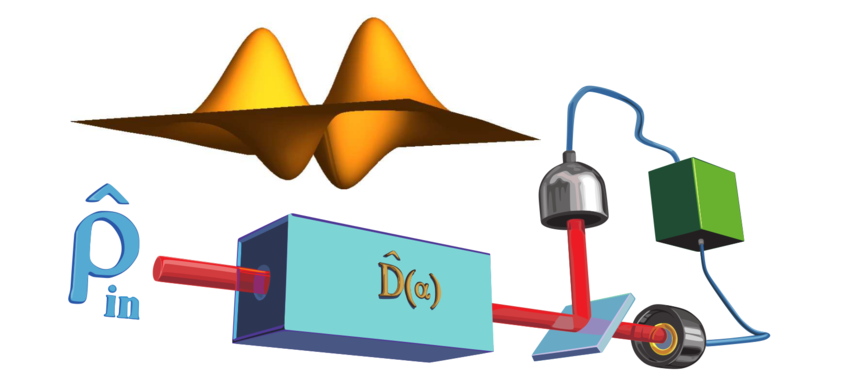RESEARCHERS CAN EFFICIENTLY IDENTIFY QUANTUM PROPERTIES
20.05.2020
Quantum technologies will be widely used in the future, in applications from data processing to cryptography.
These technological developments are based on the use of quantum systems, which possess some properties that are impossible to describe by classical theories. As these properties are resources for quantum technologies, it is crucial to have an efficient method to faithfully confirm that a system possesses such quantum character. Martin Bohmann and Elizabeth Agudelo from IQOQI-Vienna (Austrian Academy of Sciences) have now found such a method, as they report in the journal Physical Review Letters.
"Our approach works for quantum light, for example in a system consisting of a single photon. But in principle, this technique can also be applied to other bosonic systems," says Bohmann. The researchers use an approach that is also employed in classical statistical mechanics, the so-called phase space description. "We take the classical states that a system can assume. These then span a phase space. If a state cannot be represented as a statistical mixture of such states, then it means it has quantum character," explains Elizabeth Agudelo.
Measurable signature of quantum character
In this way it can be tested whether a photonic system possesses quantum character or not. "A quantum system can be described in several ways in the phase space. It may depend on how you measure the system. If the inequalities which relate different representations with each other are violated, it is a quantum system." says Agudelo. The new approach makes it possible to determine the quantum character of a system, even in situations where this is not possible with other methods.
The new method is also interesting for experiments. "The phase-space distribution inequalities are fundamentally related to correlation measurements. The results from several light detectors are linked to different phase-space distributions of the quantum system. If we compare these with each other, we can directly sample our inequalities from the experiment. The demands on the efficiency of the detectors are relatively low with our approach," says Bohmann.
Manifold uses
The method is not only of interest for technological applications but also for fundamental science, as it explores the question of what really constitutes a quantum system and provides approaches to explore what a quantum system is capable of that a classical one is not.
In addition, the new tool can be used in various areas of quantum technology in the future. "It is the nonclassical effects that make quantum systems so interesting. Our method is well suited to demonstrate such effects. Only then can they be used for quantum technologies," says Bohmann. The ÖAW physicists have already experimentally proven that the method works in collaboration with colleagues from Italy, and a further publication is to follow shortly.
Additionally, it might be possible to adapt the presented approach to other notions of quantumness, such as entanglement or more general forms of quantum coherence. "We want to expand the possible applications of our method. We are currently working on a generalization that could open up possibilities for characterizing correlations between quantum systems," says Elizabeth Agudelo, looking to the future.
Publication:
"Phase-Space Inequalities Beyond Negativities", Martin Bohmann and Elizabeth Agudelo, Physical Review Letters, 2020
DOI: https://doi.org/10.1103/PhysRevLett.124.133601

